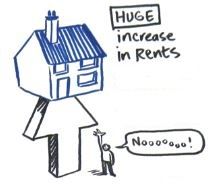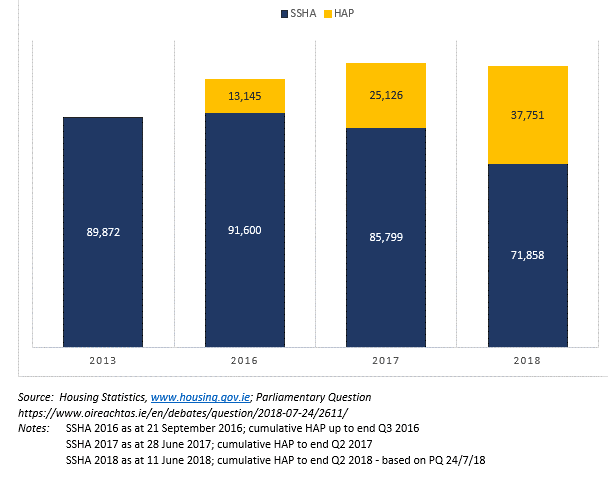Social Housing Need: At least 110,000 households in need of sustainable social housing

In 2011, the number of households assessed as having a social housing need was 98,318 – the highest number since 1993 (when it was 28,200). A change in the way need was calculated, and a removal of duplicates, saw this number reduce in 2013 to 89,872. The Housing Assistance Payment (HAP) was introduced in 2014 as an alternative for those who would previously have been assessed as eligible for Rent Supplement but were clearly in need of longer-term support. (Rent Supplement was only ever meant to be short-term). Households in receipt of HAP are deemed to have their social housing need met and are not counted in the Summary of Social Housing Assessments (SSHA). This means that households who would, pre-2014, have been given Rent Supplement and included in the social housing waiting list data, are no longer included. It also means that, notwithstanding the fact that the actual circumstances of the 7,128 households that were transferred from Rent Supplement to HAP in 2016 and 2017 (disaggregated data not available for previous years) may not have changed, they have been removed from the list.
When the number of households on the housing list and those in receipt of HAP are added together, the difference between 2017 and 2018 is less than one tenth of what is reported – at 1,316 households (see Chart 1).
Chart 1: Summary of Social Housing Assessments and HAP, 2011-2018

Methodology
Even the small decrease described above is questionable when you consider the methodology used to gather the data for the SSHA. This exercise relies on households to respond to a, now annual, written request issued in April to verify their need for social housing, with a full suite of supporting documentation, by the second week in June. Those who do not respond are then removed from the housing list (although local authorities did have some discretion to reactivate those who made returns within a ‘reasonable timeframe’ after the deadline).
With private rents continuing to rise, and decreasing numbers of rental properties available within HAP limits, these tenancies are increasingly precarious. The private rented sector is not the solution, increasing investment to build more social and (truly) affordable homes is the only way to tackle this crisis.
The Summary of Social Housing Assessments 2018 can be viewed here.